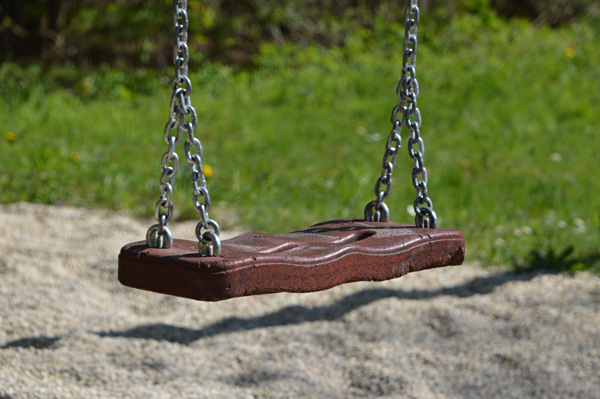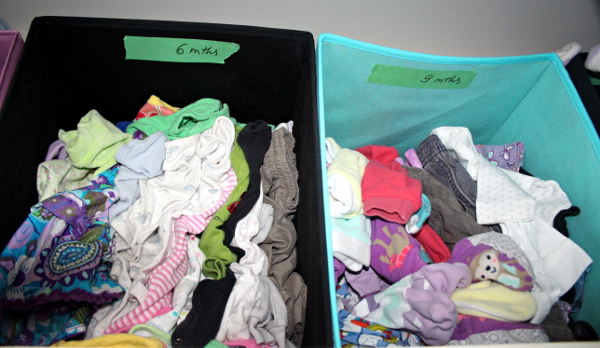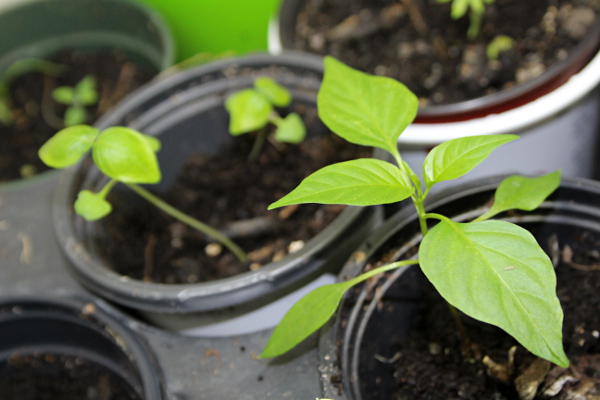Many people are under the impression that, once you have children, the days become a never-breaking routine, leaving no space for adventure in your life. In my experience, with children around, the routine can turn into an adventure at any moment. The dynamic is quite different, true, but I find that interspersing established patterns and free-form experimentation can work quite well to keep our days interesting and get things done.
We are in a process of moving, switching office locations and jobs, with the baby teething and breastfeeding lots at night, and the older child being in turns excited and apprehensive at the chaos. The cat is getting more bewildered by the day, renovations are taking place in the new house, relatives and friends are coming to visit from out of town and we are planning a new garden remotely. Any one of these factors would significantly affect our routine. Together they send any semblance of order tumbling down, and this is where free-form organization shines.
There are a few key points I usually focus on when unexpected things happen:
- Keep some patterns stable as much as possible: bed time routines, dinner, reading with kids.
- Lock in important dates, equipment rental times, and childcare.
- Avoid planning too much in a single day, instead keep a running list of tasks with due dates, prioritized by urgency.
- Seize every opportune moment to complete one of the more urgent tasks off the list, inching (or leaping) closer to the goal.
- Remember to rest, get adequate nourishment, and have fun.
The events around our house purchase and the weekend following it had thrown a few spokes into our wheels. Our moving adventure is full of good examples of how one could adapt to changing circumstances.
We knew we were getting the keys to the new house on Friday, May 15th, and the timing had to be flexible, depending on when all the paperwork from both lawyer offices got submitted. There was about a 5% chance that the purchase would not get registered by the end of business on the closing day (why this has to wait until the day in question boggles me — it would be so much more logical to do this in advance), but we were hoping for the best, as we needed to start moving boxes the next day, and the contractors would have to start on Monday.
The house purchase is a big step for us, so I also wanted to properly acknowledge it. I have planned a lovely celebration at the new place, and have loaded the supplies into the car in advance: toys and books to occupy the kids in the empty house, spare clothing if they get messy playing outside, cushions to sit on, cutlery, napkins, sarong for a tablecloth, a box to serve as a table, a delicious Thai take-out dinner that I have acquired during lunchtime, and a bottle of Veuve Clicquot with the champagne glasses from our wedding. Advance planning is great for surprise evenings.
We ended up receiving the keys 15 minutes before the close of business, on Friday before the long weekend (I had to make a dash downtown during rush hour to acquire them), making the timing really tight to gather everyone from work and childcare and head off to the new house. Flexibility and mobility on the closing day, combined with advance planning, made for a lovely celebration.

To make the move efficient, my partner and I have decided to move fragile items and various boxes by ourselves, so that we had more space to pack the rest of the items and didn’t waste time of our friends who would come to help us move the furniture on the following weekend. To this end, we have lined up childcare for the Saturday following the closing date, and have rented a cargo van. The rental has been locked in weeks before, and I made sure to have lunch for us at the new place, to keep up the energy.
The box move went well — there were two of us and we made three trips between 10am and 7pm, moving books (our “knowledge cube” of over 60 boxes at this point), clothing, most toys, pantry and kitchen items, puzzles, transformers, paintings, posters, fragile items, most of my beading studio, and various odds and ends. The puzzles alone (boxes of undone puzzles and stacks of completed puzzles) filled an entire van. Yes, I know I’m an addict. I can stop at any time I want. I just don’t want to. The puzzles had to be stacked up in the living room, as by the time we moved them we had to return the van. We planned to move the puzzles to the basement the next day, so that they were out of the contractors’ way on Monday.
We have also met the contractors at the new house in the morning — they were dropping off wood for the renovations taking place the following week: removing all carpet and replacing it with hardwood. It was an efficient move and a great workout, made possible by well-organized team work.
Straight from the move, we went back to my friend’s place. She had our kids for the day, playing with her kids, and was hosting a Blessingway in the evening, for which we stayed. Being at the Blessingway, surrounded by wonderful mamas, helped us shift the energy from the go-go-go all day to a contemplative pace. We were there to support a friend — a strong VBAC mama, to reconnect with the kids whom we haven’t seen all day, to replenish our energy with food, drink, and conversation.
Towards the end of the night, we have realized that the keys from our old place might have been dropped on the ground at the van rental parking lot, so we had to retrace our steps and, thankfully, there they were, on the ground. It was a lovely evening, and as we got home around midnight, we skipped the bath time for kids and all went straight to sleep.
We have accomplished what we needed for the day, the kids were happy to have company of their friends during the day and lots of attention in the evening from us, we took time to switch activities and enjoy an evening with friends before the next day’s challenges.
Sunday morning, after a late start and a delicious breakfast of bacon and eggs, we went to a landscaping center, to pick out river rocks for the permaculture herb spiral we are planning for the new garden. Despite the heat, our kids had lots of fun — the oldest was climbing all over the rock pile with me, picking the biggest and most beautiful rocks. The youngest was observing the proceedings and playing with smaller rocks. It gave our son a sense of accomplishment, helping us with useful work towards the garden project, and we made it fun, playing outside in the sunlight.
A few days before the closing date, the washing machine that was supposed to come with the house, gave out. After a discussion with the seller which uncovered previous issues with the machine, we have decided to get a new one, and so after the rock picking adventure we headed to an appliance store. Normally such shopping would have been tedious for kids, but we have done our research in advance and knew exactly the model we wanted, so the process didn’t take a long time. Opening appliance and drawer doors to inspect the insides made for a fun game for our son.
We had a filling lunch, followed by getting the kids to sleep, at which point my partner stayed home with them, and I went back to the house to paint quarter rounds that were going to go over top of our new floors and to be there for delivery of the soil for our new garden. This is where things went askew. The quarter rounds had stickers on them — at least three apiece — which needed to be peeled off before any painting could be done. That took me about an hour (and a few broken nails), during which time I have found out that the soil got delivered to a neighbour several doors down, across the street. The delivery company failed to call us in advance, as they promised, and had delivered to a wrong house. At this point, it was after 6pm. So, clearly, the painting was not even started, moving the puzzles had to be postponed as less critical, and we had to relocate the soil from our neighbour’s driveway.
This is where flexibility was important — we had to mobilize. I have found a friend who was willing to come help, and together with my partner, with a wheelbarrow and a garbage can, they have moved 3 square yards of soil in about 4 hours. In the meantime, I was entertaining the kids — prowling the back yard, exploring the new house, playing with balloons, toys, books, and dancing to music. After dinner (I had cooked lots in advance of this busy weekend), I got both of them to help me unpack various kitchen and pantry boxes: the kids were occupied, playing and feeling helpful, while the kitchen was becoming more usable and we were acquiring empty boxes to bring back for packing other things.
The soil was moved by around 10pm. We all had dinner, kids had lots of play time, work got done, and kitchen boxes were unpacked. We were flexible to put aside the painting and moving of puzzle boxes for later. We were fortunate to have a good friend who was available that night. We were resolved to put in the energy to move the soil, to unpack the pantry, and to keep track of two children, one of whom was bouncing off the walls and another insisted to be walked everywhere (unable to walk by herself yet), especially up the stairs. We decided to skip the bath time once more, and go straight to sleep, once we got home.
The next morning (Monday of a long weekend) brought another surprise: despite our contractor’s reassurances that holidays were not relevant to his crew, none of them have shown up. We proceeded with moving the puzzles to the basement. The washing machine was delivered in the morning. Kids initially played outside with me, drawing an outline of the permaculture spiral with a piece of string tied to a stick, marking the spiral circumference with river rocks, discovering the lost toys in the dirt, and covering the grass with cardboard.

Later my son insisted on helping with the puzzle relocation which made for a fun game for them. My daughter calmly opened up a puzzle box and became very intent on watching puzzle pieces stream through her fingers. When they got tired, my partner took them out to explore a local park, while I finished up with the puzzles.
The park adventure didn’t last long, as desire for food and rest grew. We went home and had some lovely homemade soup for lunch. I have found an email from our contractor in my inbox, letting us know that — oops — his crew did think a statutory holiday was important (as I anticipated), and the work would start on Tuesday instead. This has, naturally, extended the timelines we had established, but because I had built in a buffer between the planned end of renovations and the furniture move, the impact has been minimized.
As the kids fell asleep, I went back to the new house, to attempt painting the quarter rounds once again. I have succeeded.

It was a lovely quiet three hours, where I got to focus on the painting and got so inspired, I’ve also decided to paint three pillars inside the house, as their paint was peeling off. I loved the contemplative, uninterrupted time when I could be attentive to detail. With my kids being fed, happy, and asleep under a watchful eye of a loving caregiver, I could throw myself into a project to make our new home brighter.


I went back home, the kids were up, and we’ve decided to enjoy a family-centered evening. I’ve barbecued some farm-bought sausages, dodging an indecisive rain with my son under a huge umbrella. I’ve fried up some potatoes and steamed some veggies. We had a delicious dinner with refreshing sangria, followed by a leisurely bath time for the kids.
To look back at the weekend, despite all the factors outside of our control, we got everything planned done (although not in the order anticipated): all the packed boxes and lots of fragile items have been moved, we’ve attended the Blessingway, picked up rocks for the garden, got the wood and washing machine delivered, freed up space for the contractors, and painted the quarter rounds. Unplanned, extra things got done as well: pillars got painted, kitchen and pantry boxes got unpacked, soil ended up in our garden (as opposed to being on our driveway), permaculture spiral got started.
Through all this, we haven’t been missing meals, kids were happy, fed healthy meals, were playing lots with us and with friends, spending time outside and participating in the move, which made them feel helpful and appreciated. For my partner and myself, there was physical exertion, satisfaction from bringing our cozy home reality closer, time to relax and connect with each other and with friends. As a bonus, there is a more manageable environment at the old place for the following week, before we move the furniture and the existing garden equipment over. This could have been a stressful, frustrating weekend. Instead it was full of joy, connection, and productivity.
A bit of an extensive example, but I just want to show how powerful flexibility, combined with some advanced planning, can be. Lock in important times, arrange childcare, remember to take care of your needs for nourishment, sleep, relaxation, connection and appreciation, involve kids whenever possible, and be flexible about the rest.

























 To be resilient in the face of changes, one must let go of the need to cling to familiar and give in to uncertainty of life. Just as with good sex or a good birth, feel the rhythm, follow it, listen to your senses, and ride that wave. Let go and you’ll be more in control and feel more pleasure from the process than if you try to resist the flow. You cannot control life circumstances.
To be resilient in the face of changes, one must let go of the need to cling to familiar and give in to uncertainty of life. Just as with good sex or a good birth, feel the rhythm, follow it, listen to your senses, and ride that wave. Let go and you’ll be more in control and feel more pleasure from the process than if you try to resist the flow. You cannot control life circumstances. 





 We are moving, and this means that for the past month and for the next couple of weeks we are living among boxes, and in constantly changing surroundings. When you have children, adults with hobbies, a full-fledged beading studio, a large library, a network, and a pantry, it makes for quite a few things to pack. A minimalist friend of mine came to visit during the early stages of packing and exclaimed: “I don’t know how you can stand it, I’d go crazy having to live like this for even a week!” Any change in routine is stressful, full of unknowns, and can be downright scary for children. I have come up with ways to minimize everyone’s stress and make packing more fun.
We are moving, and this means that for the past month and for the next couple of weeks we are living among boxes, and in constantly changing surroundings. When you have children, adults with hobbies, a full-fledged beading studio, a large library, a network, and a pantry, it makes for quite a few things to pack. A minimalist friend of mine came to visit during the early stages of packing and exclaimed: “I don’t know how you can stand it, I’d go crazy having to live like this for even a week!” Any change in routine is stressful, full of unknowns, and can be downright scary for children. I have come up with ways to minimize everyone’s stress and make packing more fun.









